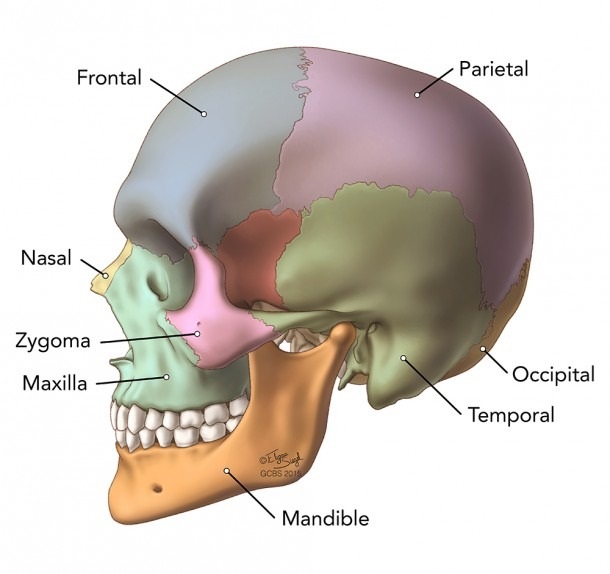
Nasal Release Technique Services
Nasal Release Technique FAQ
Breathe Easier & Relieve Sinus Pressure with Nasal Release Technique
Struggling with chronic sinus pressure, migraines, or post-concussion symptoms? The discomfort can be frustrating, affecting your breathing, focus, and overall well-being.
At Ashworth Chiropractic & Acupuncture Clinic in West Des Moines, IA, we offer the Nasal Release Technique, a specialized, non-invasive treatment designed to help you breathe easier and feel better.
This innovative approach, developed by Dr. J. R. Stober of Portland, works by gently adjusting the bones in your skull through your nasal passages.
A small, soft balloon is carefully inserted into the nasal passage and momentarily inflated, applying just enough pressure to realign the sphenoid bone and other key structures.
The result? Immediate relief from built-up sinus pressure, improved airflow, and restored cranial balance.
By precisely adjusting the sutures—the areas where skull bones meet—this technique helps reduce tension, relieve headaches, and promote better overall function.
It is especially beneficial for those dealing with chronic sinus issues, breathing difficulties, TMJ discomfort, or lingering post-concussion effects.
A Proven Technique Known by Many Names
The Nasal Release Technique is widely recognized under different names due to its effectiveness and long-standing use. You may also hear it called:
Regardless of the name, the goal remains the same—to provide lasting relief by restoring natural nasal function and helping patients in West Des Moines, IA, and surrounding areas breathe, heal, and feel better.
Why Timely Treatment Matters
The Nasal Release Technique goes beyond simple adjustments. Untreated concussions can lead to various debilitating symptoms, increased pain, and a longer recovery process. This therapy holds particular significance for athletes, military personnel, and individuals in professions vulnerable to head injuries. Prompt intervention with this can be a game-changer.
Understanding Nasal Release Technique
Our bodies are finely tuned systems always seeking balance. When concussions or birth traumas occur, they can disrupt the alignment of the skull’s bones. This misalignment can result in poor posture, breathing difficulties, pain, and even depression. This Technique realigns these bones, optimizing neurotransmitter activity throughout the Central Nervous System.
What to Expect
The Nasal Release Technique is a gentle and non-invasive procedure. It involves a finger cot attached to a blood pressure bulb, which is carefully inserted into the nasal passages. Lubrication ensures your comfort. As the bulb inflates the cot, you may feel gentle pressure in the nose and inside the head. This process is repeated in different nasal sections for balance and maximum effectiveness.
Indications and Symptoms
Nasal Release Technique has shown promise in addressing a range of conditions, including:
- Concussions and head injuries
- Headaches, migraines, and head pressure
- Fatigue, fibromyalgia, and chronic pain
- Muscle spasms, neck, and shoulder pain
- Poor concentration and focus
- PTSD
- Sinusitis, sleep apnea, snoring, and breathing disorders
- Tinnitus (ringing in the ears)
- Traumatic Brain Injury
- TMJ (mouth, head, and jaw pains)
- Vertigo and balance problems
- Whiplash Syndrome
Contraindications and Possible Side Effects
As with any medical procedure, there are contraindications and potential side effects to consider. Patients with bleeding disorders or those taking anticoagulant medications should exercise caution. Those with prior nasal or facial bone surgery, particularly involving turbinates, may not be suitable candidates. In rare cases, asthma attacks have been reported, so asthma patients should have inhalers on hand. Our practitioners conduct thorough medical history checks to identify contraindications.
Possible side effects include nosebleeds, minor soreness, tenderness in nasal passages, tingling in maxillary incisors, gum soreness, and occasional headaches. Temporary throat irritation due to increased sinus drainage may occur. Rest assured, our therapists prioritize your comfort and well-being throughout the treatment process.
For further inquiries or to schedule a consultation with our experienced practitioner in West Des Moines Iowa, Matthew Wilson DC, FIACA, please do not hesitate to contact us.
Very professional and in depth consultation. These people seem to genuinely care about people’s health and progress.
I really love it here! They are very friendly and I feel Dr. Wilson is giving me great treatment! I also don’t feel pressured into coming back too frequently. The adjustments are great! Great office!
My family have used chiropractic and physical therapy services here and every one of us have had excellent outcomes. I wouldn’t go anywhere else these folks are as good as it gets.
Dr. Matt and the entire staff have been GREAT! I went in for some issues I was having with my neck and back and Dr. Matt also helped me with some other issues I was having with my calf and shoulders that have made a HUGE improvement in my overall health and comfort.
I highly recommend using Dr. Matt!
Dr. Matthew squeezed me in on short notice and took very good care of me. He was very thorough and didn’t just adjust me and let me walk out. Amazing experience here and the receptionist is a sweetheart.
Dr. Matt has done wonders for me and I recommend him highly – I can’t say enough good things about him. Dr. Matt and staff are good people and will take great care of you.
